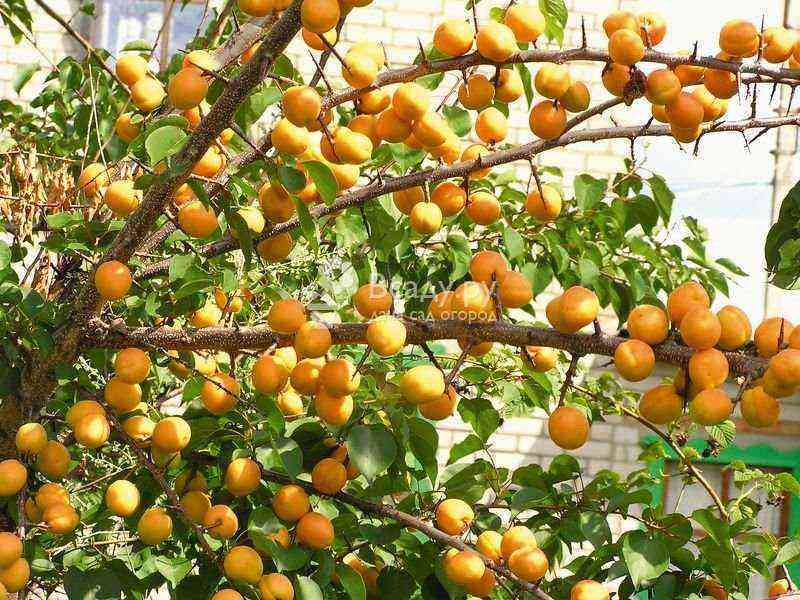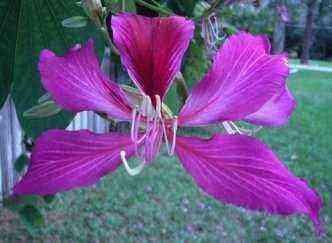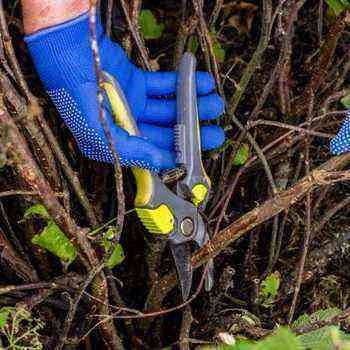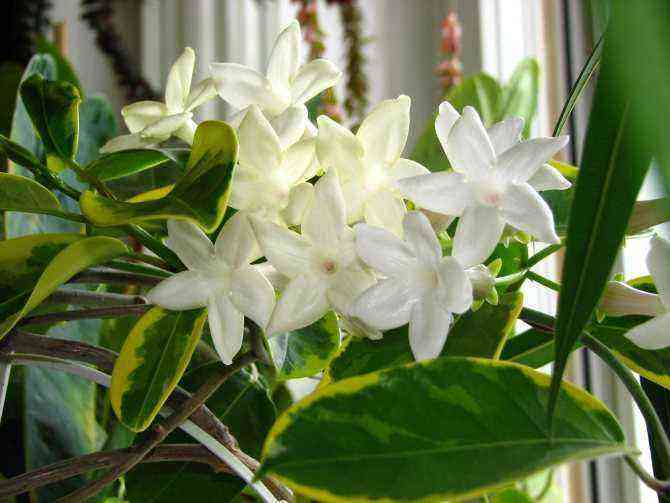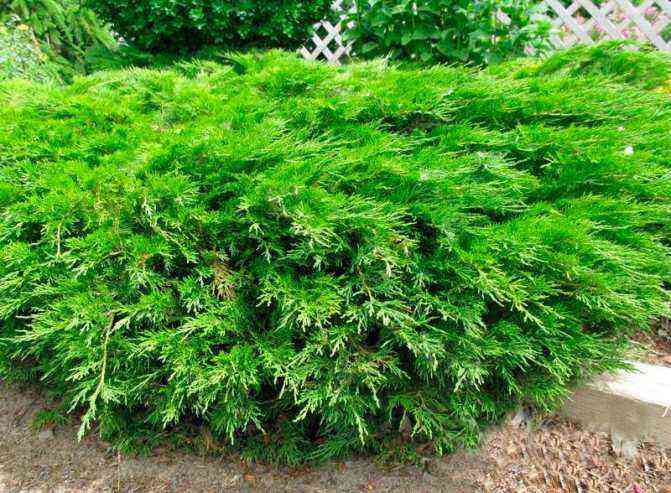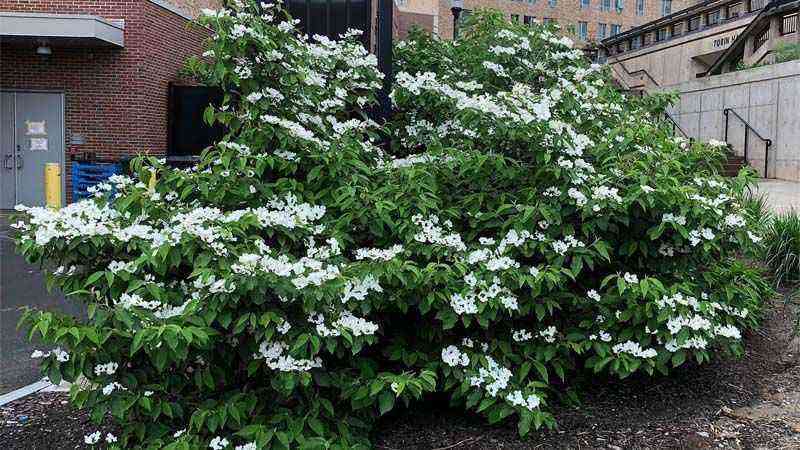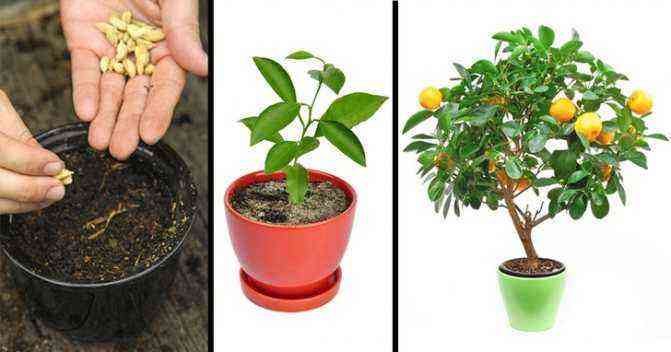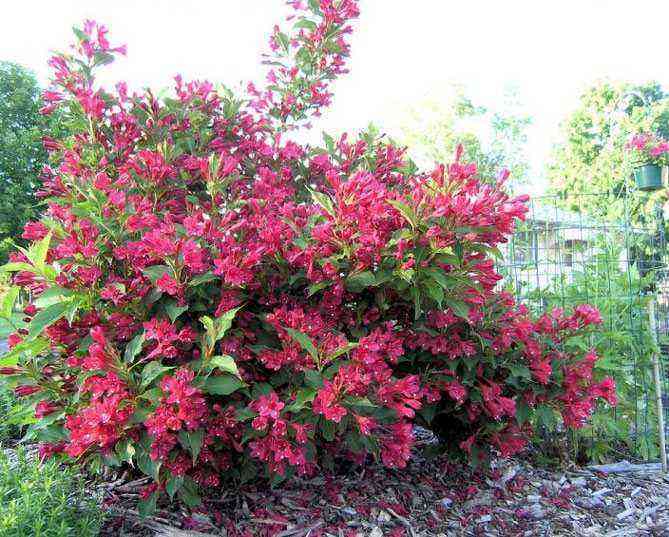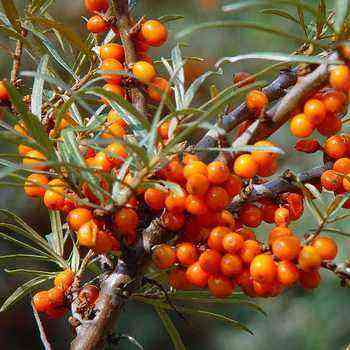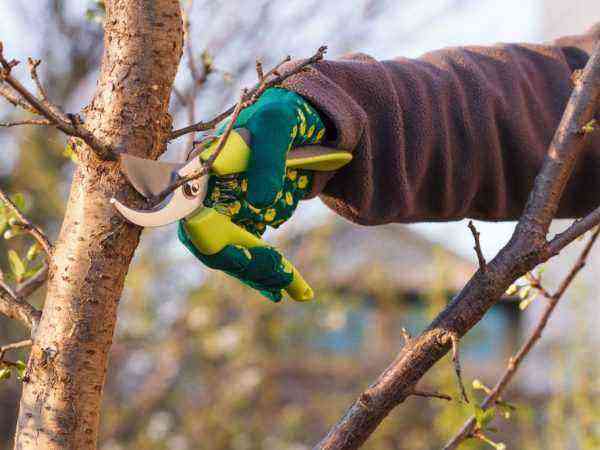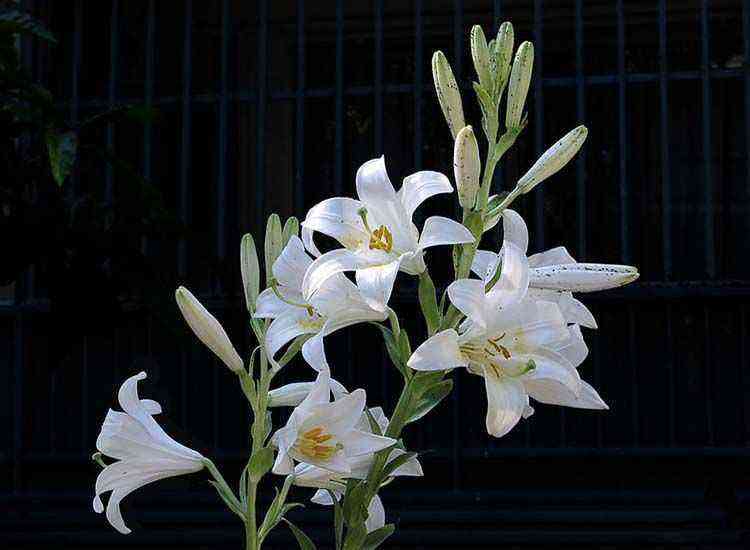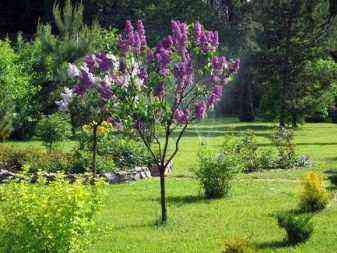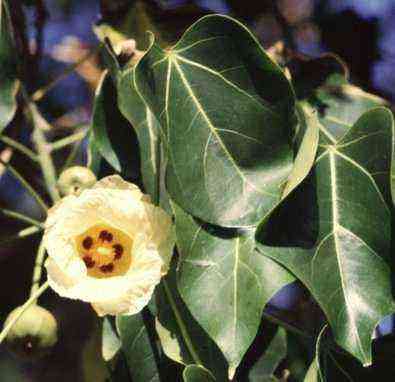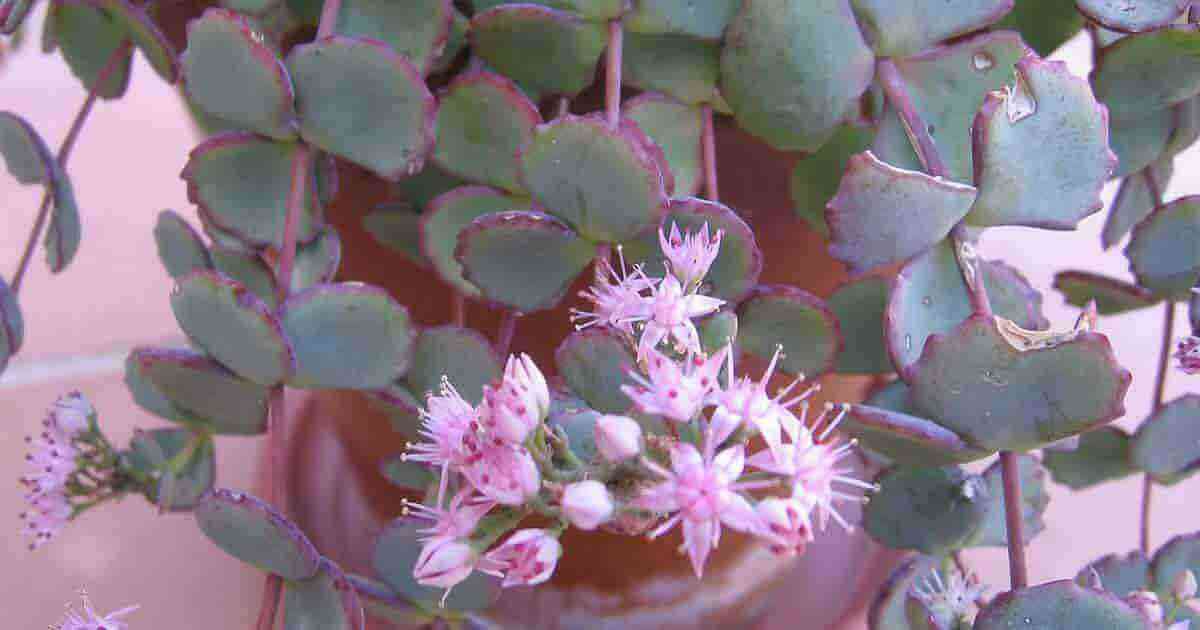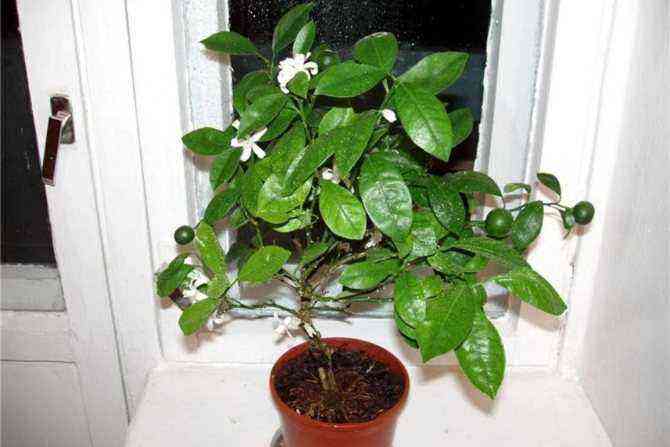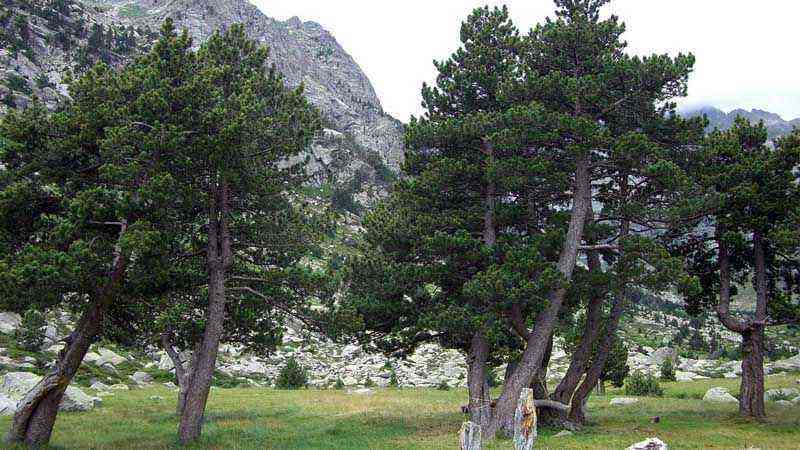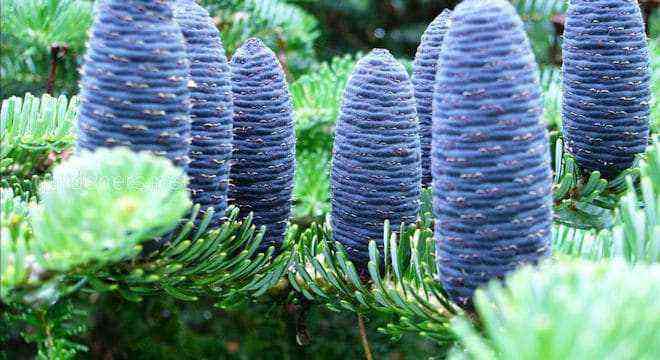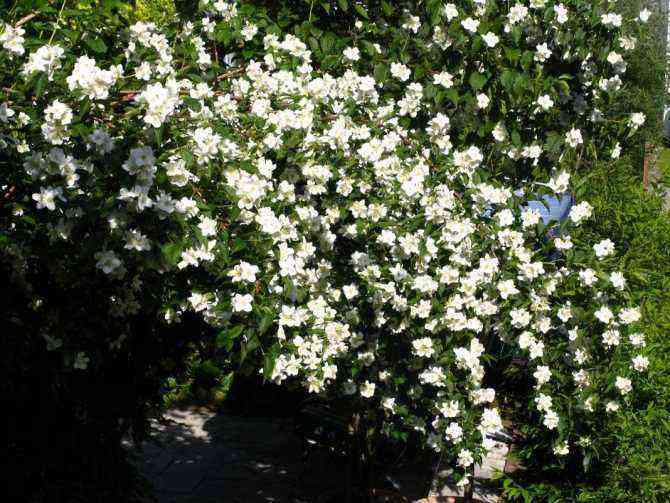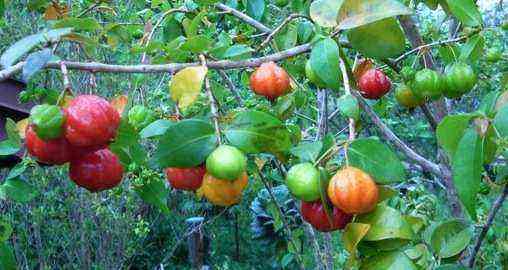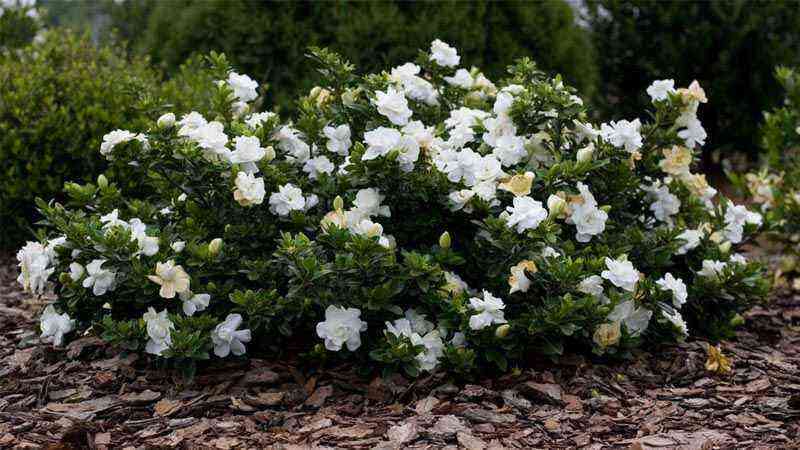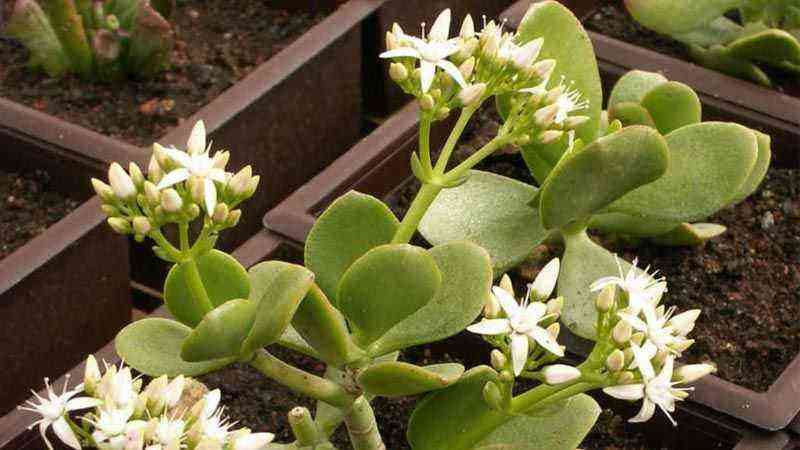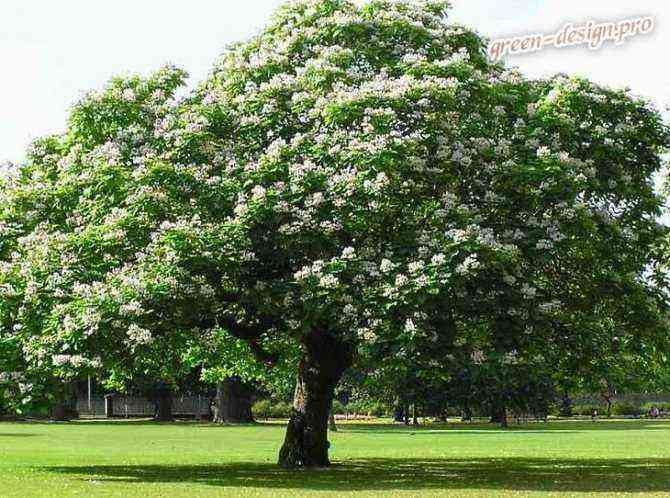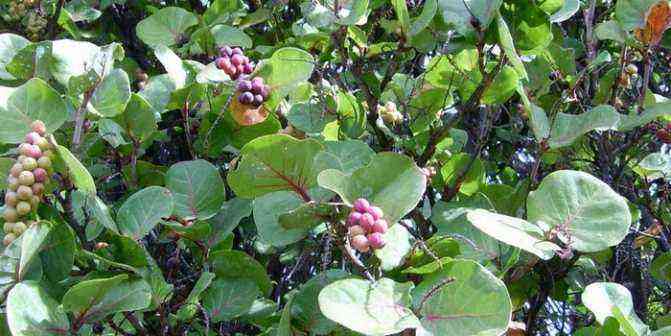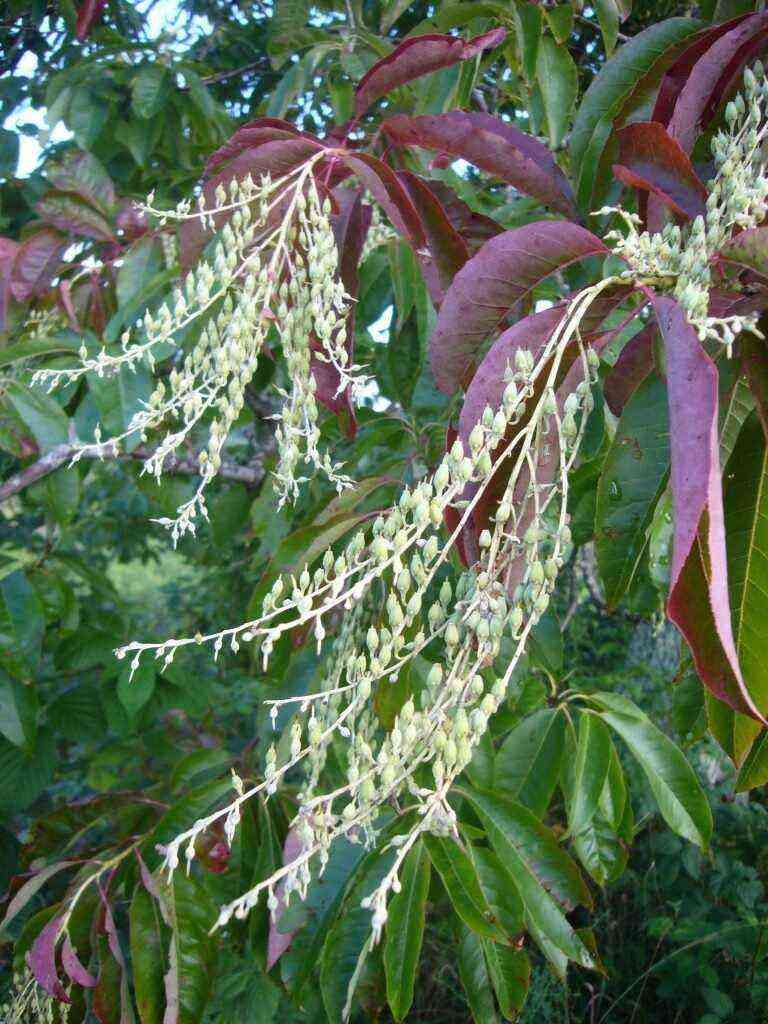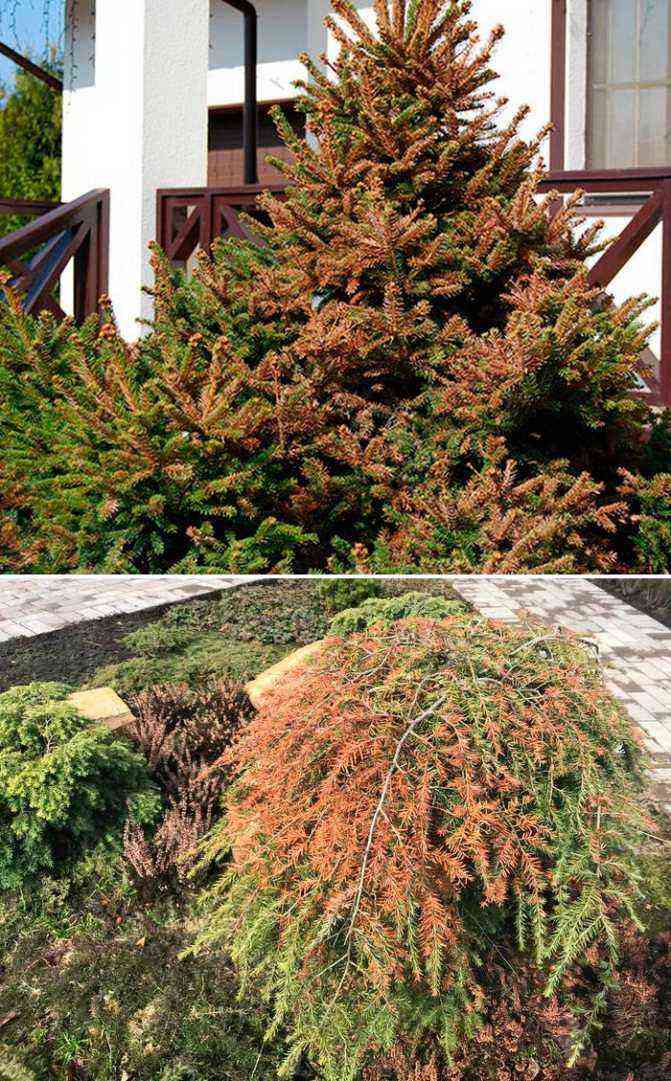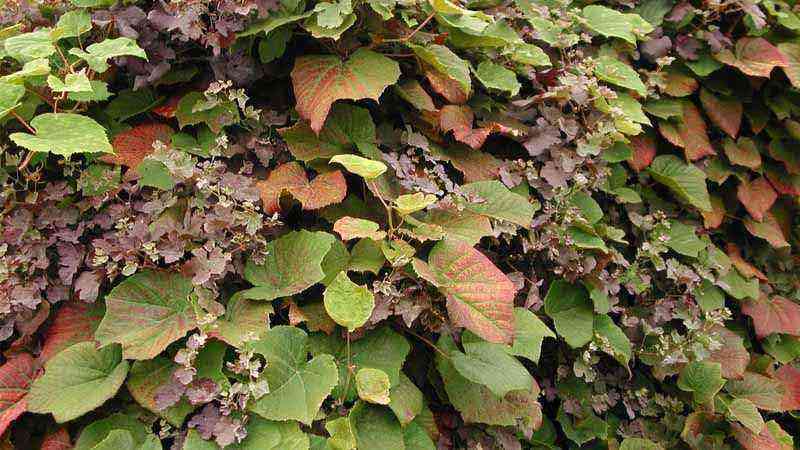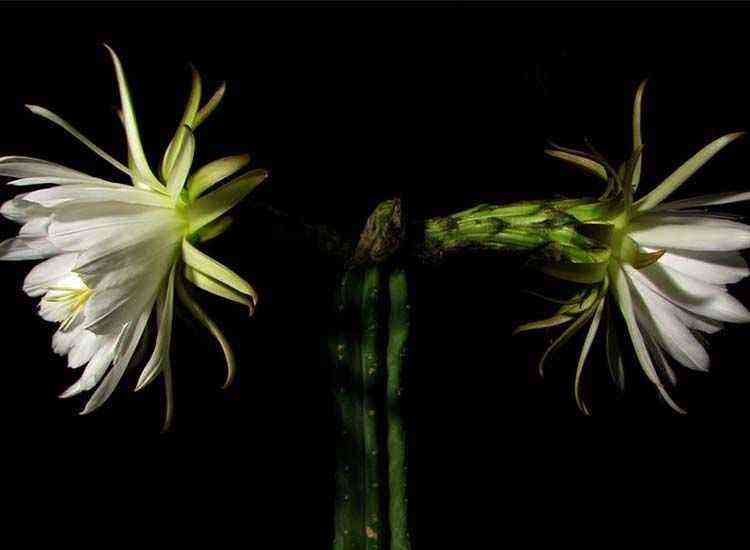Exotic plants on the windowsill – this is an opportunity to diversify the phytodesign of an apartment or office. Sometimes the gardener is driven by simple human curiosity. For example, I want to know how to grow a persimmon from a stone on the windowsill at home – is it possible, will the tree bear fruit and please its owners with bright orange berries. A separate question is how to care for the plant, so that it pleases with its emerald green and rapid growth in the conditions of a short day in the winter and with dry air near the central heating radiators.
Just say, the persimmon from the stone at home is growing quite slowly and the first results of persistent daily work will be visible only after 4-5 years. It is during this period that the first flowering of the bush can be expected. Approximately in 8 months the tree will give fragrant and bright berries that can be eaten.
In the proposed material, you can familiarize yourself with the whole agrotechnical process and draw for yourself the necessary knowledge about how to grow persimmon at home from a bone obtained from a mature fruit. Planting and growing is a process that requires not only knowledge, but also experience. And you can draw it from the advice of experienced gardeners.
How to grow a persimmon from a stone at home: planting instructions
Let’s take a look at the steps in the instructions that reveal the rules that we mentioned in the introduction to this article.
Step number 1 – determine the number of harvested seeds
It often happens that after planting one persimmon seed, gardeners who conduct an experiment in modest home conditions do not even get seedlings. This is because not every plant bone has the potential to grow. To be sure of the result, you must:
- prepare a few persimmon seeds;
- it is advisable to take material from different fruits, for example, three or four.
Taking advantage of this trick, you will several times increase the likelihood that this or that seed will germinate.

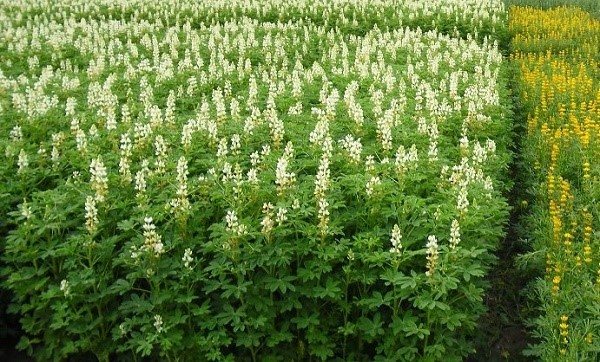
First you need to decide how many seeds you will prepare for germination
Step number 2 – choose the right “maternal” fruits
Unfortunately, even harvesting a large number of seeds may not save you from gardening failure, since, for example, frozen persimmons sold in winter, as a rule, have lifeless, frozen seeds. A sick persimmon has the same seeds, green persimmons are not fully ripe seeds, etc.

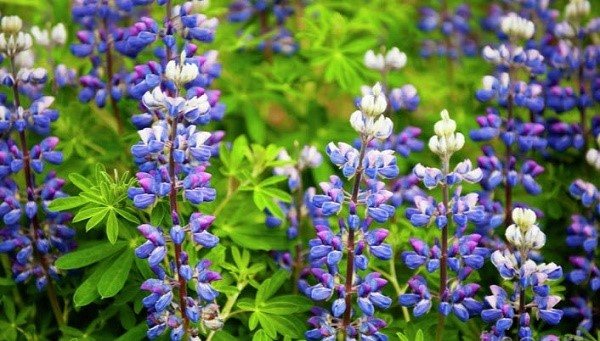
Unripe fruits are best suited for germination, which can be left to gain strength on the windowsill in the apartment.
According to statistics, if you choose the right seeds, then about 8 out of ten pieces will necessarily sprout, later turning into slender trees that bear fruit. Here are the parameters of the acquired “mother” fruit, which need to be monitored so that the seeds inside it are solid:
- overripe fruit is a bad fruit, with the same insufficiently strong biological material for planting, refuse to use them;
- frozen persimmons, which are often sold on the market, are also unlikely to give even weak sprouts;
- damaged fruits are unsuitable material for growing;
- green persimmons are not only tasteless, they also cannot produce strong enough shoots.
So which fruit should you buy? Walking through the store, you should find not green, but a little underripe persimmon, which will reach home condition, being in a warm place. Then the fruit will be ready not only for the meal, but also for the collection of seeds.
Too ripe and too green fruits for harvesting seeds for seedlings are not suitable
Step number 3 – get the bones
You can get the seeds only from those fruits that taste ripe, and when pressed, do not stick out, but gently diverge. Carefully, without damaging the surface of the seeds, squeeze them out of the persimmon flesh, and peel. Then you need to:
- rinse the collected material under warm running water;
- dry on a towel, paper or ordinary.
After removing, you must leave the seeds to lie down for a while.

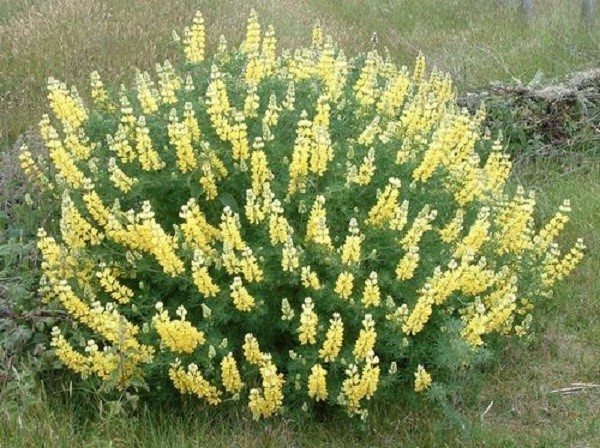
Before planting, it is necessary to clean the pulp from the bones and dry them.
Step number 4 – disinfecting seeds
In order for the grains to germinate for sure, and the stems that have emerged from the ground are strong and resist adversity, it is necessary to carry out a preliminary disinfection of the extracted seeds. For this:
- the bones are placed in a manganese solution, barely pink;
- kept in a diluted solution for several hours.
Provided that the seed is not suitable for germination, it will float to the surface of the solution.
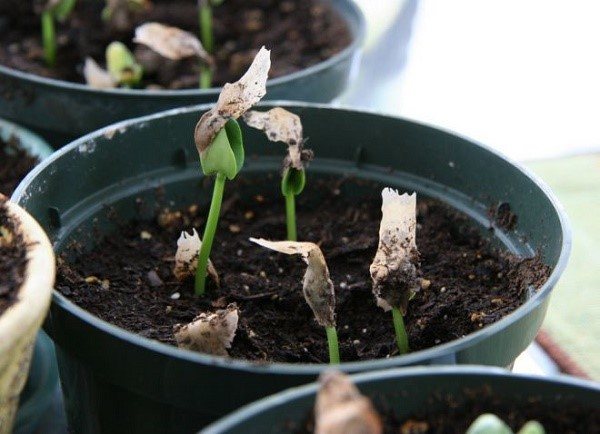

Persimmon seeds must be soaked in a manganese solution or water before planting.
Note: if you do not have manganese, or the patience to go buy it, then you can soak the bones in at least warm water. Thus, you will nourish them and give them strength.
Step # 5 – seed stratification
The term stratification means the imitation of natural phenomena that affect the growth of a particular plant, in our case persimmons.
1. The first stage of this event involves the treatment of seeds with the “Epin” solution – an adaptogen with a pronounced anti-stress effect.
Epin
This bioregulator is sold in specialized garden stores, but if for some reason you cannot purchase it, use the juice of the most common aloe:
- squeeze the mucous part of the flower onto a napkin;
- put the seeds on the resulting mass;
- make a kind of bag out of a napkin, wrapping the seeds in aloe juice.
The damp bag is placed in the refrigerator and remains there for a month and a half. During the entire specified time, it is necessary to periodically moisten the napkin, ensuring that it never dries out at all. Thus, the seeds will be hardened and ready for anything.
2. The second stage of the procedure involves the destruction of the covering layer of the bones, which must be carried out as carefully as possible so as not to damage the structure of the material, in particular, not to touch the core. The easiest way to carry out damage is using sandpaper to rub the seed:
- On the sides;
- from the top side.
In order for the seeds to germinate well, it is necessary to process them with sandpaper, only gently so that the kernel remains intact
Note: stratification is not a mandatory process, but it is still desirable to carry out it, so that our persimmons germinate more actively and be healthy.
Prices for Epin
epinephrine
Step number 6 – preparing the soil for planting a plant
In the sixth step, we will start preparing the land in which our seedlings will have to hatch. So, it should be:
- easy;
- instantly absorbing water;
- good air permeability.
A universal soil, which is sold today not only in garden stores, but also in large shopping centers, may well be suitable. If desired, vermiculite can be added to it, and be sure to place expanded clay on the bottom of the pot before filling it, which will help drain the soil.

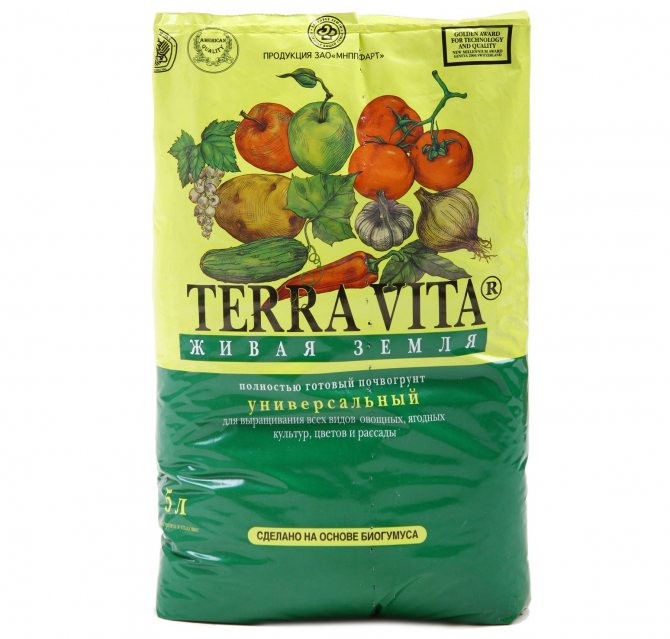
If you have nowhere to dig up the earth, then buy ready-made soil in the store, a universal variety is perfect
Step number 7 – planting the bones
At this stage, when we already have everything that was needed, we plant the bones collected and processed in advance. This is done like this:
- the material is placed on the surface of the earth poured into the pot;
- dry soil is poured to a height of one centimeter so that the bones are hidden under it;
- then the earth is watered, not abundantly, but enough so that its upper layer is saturated with moisture.
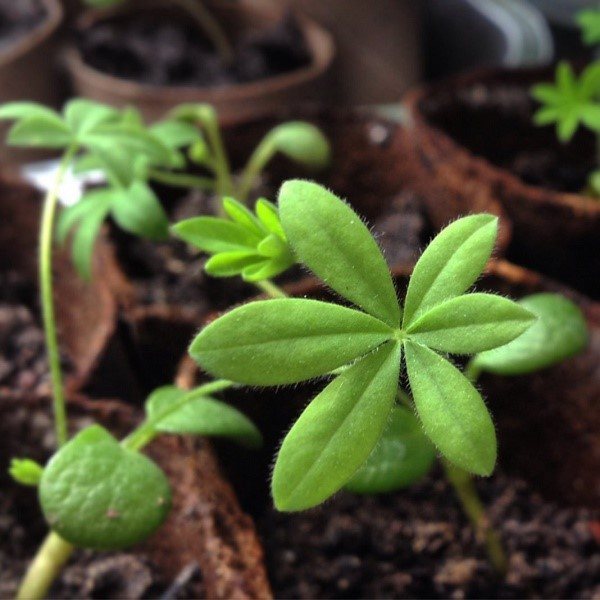
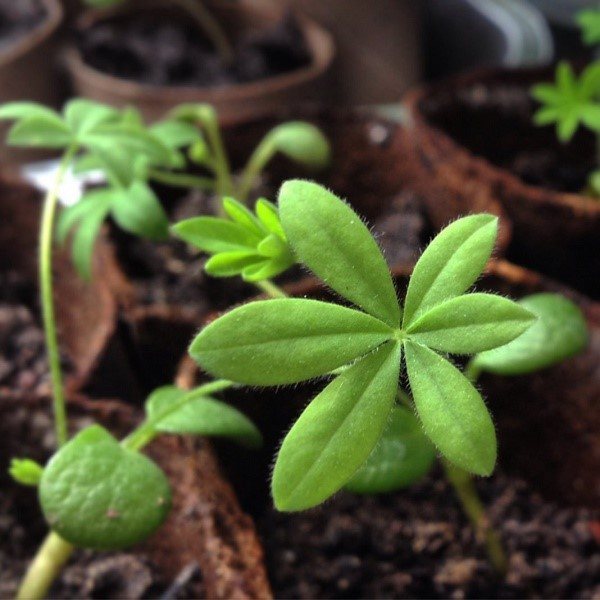
What does a sprouted persimmon seed look like?
After planting is completed, the pot or container given over for seedlings is placed in a darkened place, creating conditions similar to a greenhouse, and its surface is covered:
- plastic cover;
- plastic bag;
- glass, etc.
Done, this completes the procedure for planting the bone.


At the stage of seed growing, one must remember to remove condensate from the surface of the covering material.
Preparation of planting material
To grow an ebony tree, you need a bone, which must be removed from a juicy and ripe persimmon. For home cultivation, the Virginian variety is most suitable. The fact is that it is more hardy and less whimsical, so it is much easier to grow it.
After the fruit is fully ripe, you must carefully cut it and remove all the seeds from it. Further, they are thoroughly washed under the pressure of water, removing all fruit mucus from them. Dry the seeds in the open air; to save time, you can do this with a hair dryer, but using cold air.

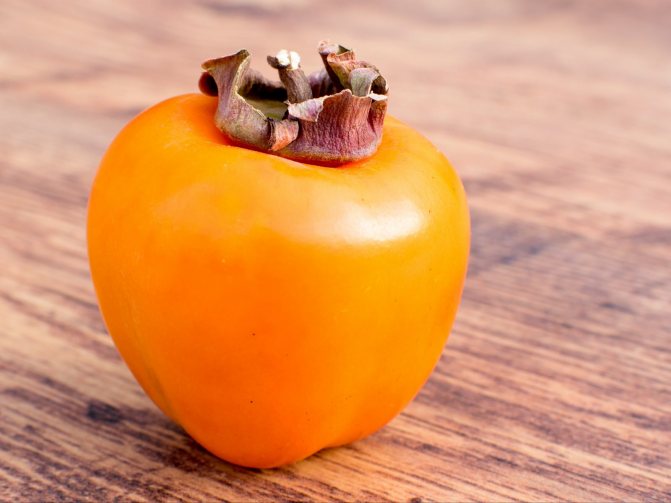
First you need to disinfect the resulting bones. To do this, they are placed in a solution of potassium permanganate and kept there for 2-3 days. First, it will protect the seeds from all kinds of pathogens. And secondly, it will help to identify all non-viable planting material that will simply float up.
In any case, planting dry seeds is not recommended. If you don’t want to bother with disinfection, then you should at least just soak them in warm water for 2-3 hours. The fact is that such manipulations increase the chance of seed germination. Experienced ebony breeders recommend adding a small spoonful of aloe juice to the water when soaking, as it stimulates growth. You can also use ready-made bioregulators, which can be purchased at specialized stores.
There is a little trick: the persimmon bone will germinate much faster if you walk on it with sandpaper before planting.
Important nuances about growing persimmons at home
For your horticultural venture to be successful, it needs to be done with many different nuances in mind. Which ones, we will consider in the following table.
Table 1. Nuances of planting persimmon, which must be taken into account when growing it at home
| Nuance | Description |
| Taking into account the season suitable for planting | Planting persimmon seeds in the ground with the onset of early spring, since it does not just appear on the shelves with the onset of cold weather. The fact is that the fruit of interest to us is winter. |
| Creation of a comfortable temperature regime | In order for the bone to germinate without problems, it is necessary to provide it with all the required favorable conditions, in particular, a comfortable temperature regime. So, it is the bottom of the container in which the persimmon grows should be heated. It is best to install the pot next to a radiator or other heater, which, however, will not be able to overheat the contents of the vessel with earth. |
| Blackout | The pot should be watered, leaving it in a dark place, as this is necessary for the fruit to germinate. |
| Constant soil moisture | It is necessary to constantly keep the earth, in which our bones are located, moist so that they receive the vital energy necessary for growth. However, do not forget that their container imitates a greenhouse, and timely remove condensation from the covering material so that the seeds do not rot. |
| Ventilation | To prevent mold from developing on the surface of your makeshift greenhouse, do not forget to ventilate the ground by removing a bag, lid, glass, or other protection you have invented. However, be careful: persimmon is a delicate plant, and even in a seed state it does not like drafts. |
The plant is given about 30 days for germination. It is necessary to carefully monitor the stages of persimmon development, and remove the film at the moment when the sprouts appear on the surface so that they do not rest against the film.
The first shoots will appear in about a month, and then you will be able to observe their active development, which occurs extremely quickly.
When the sprouts appear, they will need to be freed from the shell remaining from the bone, which is located directly on the greenery that has appeared. Unfortunately, as we have already told you, not all the seeds you planted will germinate, but only the most viable ones. If during the specified period not a single sprout hatches at all, you should repeat the procedure on a new one.
Aftercare

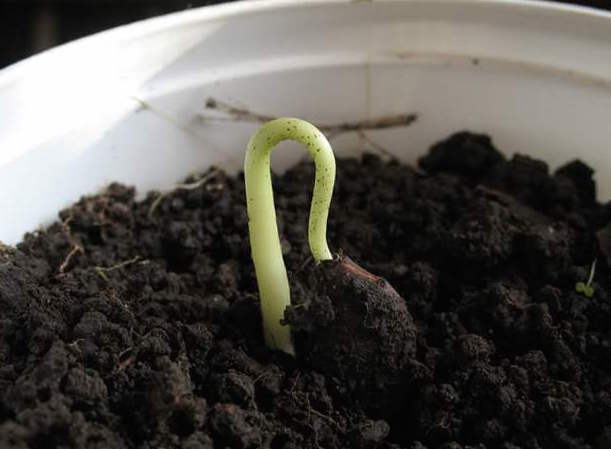
The emerged sprout of persimmon
Sprouting should be expected 2 weeks after planting. The container is rearranged to a more illuminated place. It is important that the sun’s rays do not burn the plant. In the event that a bone remains on the sprout, it must be carefully removed. This will require a sharp object. If you cannot remove it quickly, then the seed is soaked in warm water. In order for the grown persimmon from the stone to bear fruit, it is necessary to provide the right conditions.
Optimal illumination
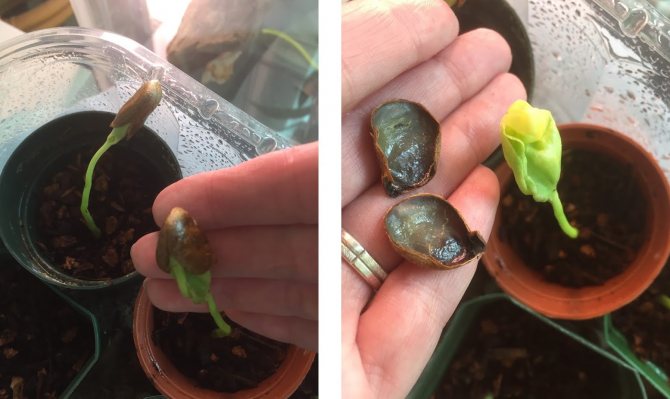
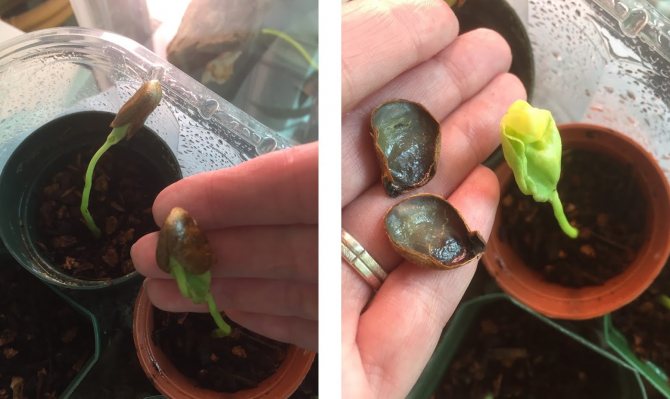
Persimmon loves diffused lighting. Bright sun for more than 2-3 hours a day can harm the plant. On the sunny side, it is recommended to glue a protective film on the window sill to create shading. A white piece of paper will also work. It is also important to provide a draft-free space. Plants do not tolerate changing climatic conditions.
Important. Young seedlings should be taught to light gradually. At first, it is enough to endure the plant for several hours. Then the time is gradually increased.
In warmer months, seedlings can be stored on the balcony. In winter, artificial lighting must be provided. It is recommended to switch on special lamps in the morning and evening. Lack of light will lead to plant diseases and lack of fruiting. Without light at all, persimmon will die at home and in the open field.
Watering rules
Small sprouts of persimmon are watered by drip
The plant requires regular watering. At home, ordinary sediment water is suitable. It is important that the open container stands for at least a day. In this case, less salt and alkali will get into the soil. To avoid blooming, provide protection from sunlight.
After 2-3 days, the water needs to be changed, because it is not suitable for watering. It must be defended anew. If possible, you can collect rainwater, spring or melt water for irrigation. The optimal composition is also found in finished bottled products.
In summer, water should be done in such a way that the soil is slightly moistened. An excess will lead to the death of the seed during germination and decay of the root system of an adult plant. In winter, watering the dormant plant is required once a month with sufficient humidity.
To retain moisture, a layer of sawdust is formed next to the root system. The use of tea leaves is not recommended, because the appearance of insects is possible. If dry leaves are seen, then watering should be increased. In the case when the plant begins to turn yellow and wilt, the amount of water must be reduced.
Temperature and humidity
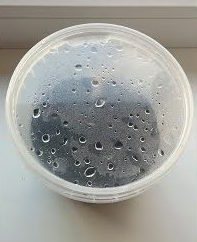

Condensation formed in a container with persimmon sprout
In order for the tree to feel comfortable at home, it is necessary to ensure the optimal temperature values. The bone is placed in greenhouse conditions. The main thing is to ventilate periodically so that condensation does not form. It is important for young seedlings to create conditions at 20-25 ° C. After the tree grows up, the readings can be reduced to 15 ° C. At the end of autumn, the persimmon goes into a dormant state. Keep the plant at a low temperature until spring.
It should also provide optimal moisture for proper growth and development. To do this, spray once a day with a spray bottle. Better to take settled water at room temperature. It should be sprayed in small portions so that water does not stagnate on leaves and soil. If it is impossible to spray, place a container with liquid next to the pot. Humidity will rise during evaporation.
Additional fertilizing
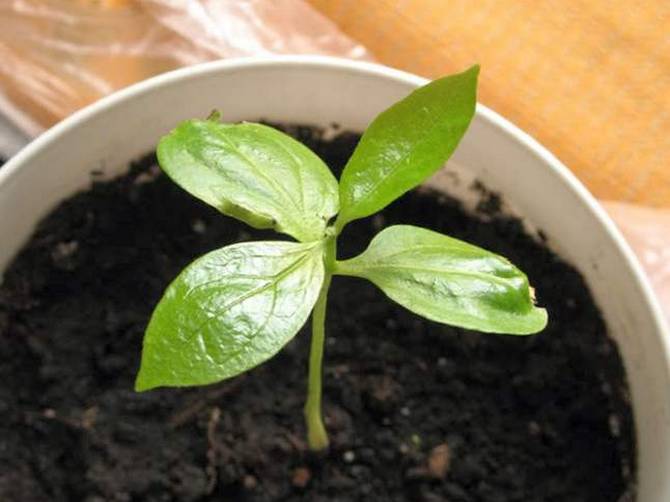
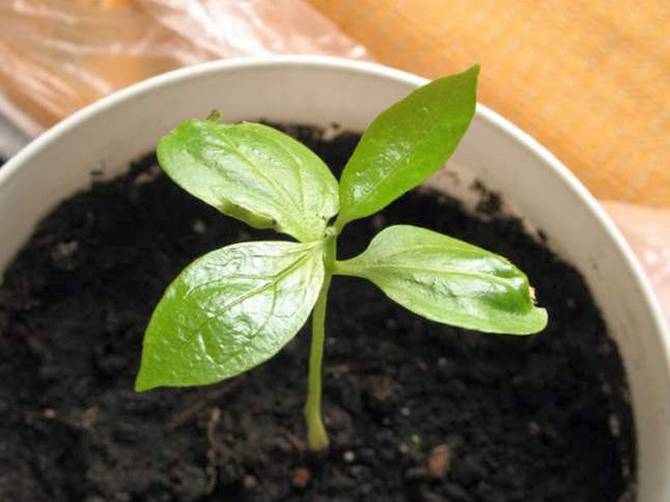
There must be nutritious soil for persimmons. During the entire period of growth, it is recommended to add fertilizer complexes. In soil rich in minerals, the bone will sprout faster. In summer, you should feed it once a month; in winter, nutrients are not added, because the tree must rest.
Fertilizers:
Nitrogen-containing top dressing applied during the growing season. Only a limited amount can be added. At home, strong growth of branches and leaves is not required. The plant should have a compact crown.
Organic Fertilizers not suitable for persimmons. In nature, a tree grows among stones. An overabundance of minerals can affect the development of the tree. Phosphorus should be added during flowering and ovary formation. Substances contribute to obtaining a rich harvest, even at home.
Potash fertilizers permissible in the autumn, when the plant is resting. Substances are necessary for the bark to ripen by spring.
Possible application complex fertilizers for indoor plants. The mixed type of feeding is important for persimmons at all stages of growth and development.
Crown formation
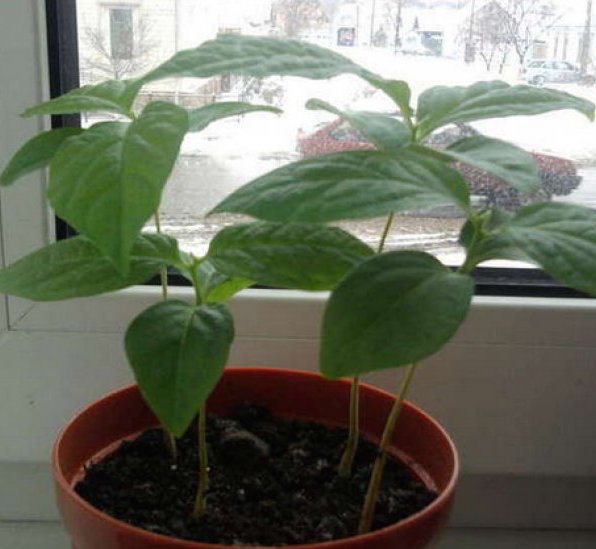

When growing persimmons at home, it is important to monitor the growth. The plant should look neat, so pruning is periodically carried out to form a spherical crown. It is not recommended to touch young seedlings until they reach 50 cm in height. The top should be removed with a pruner. The lateral branches are pinched. You need to leave 4-5 main sprouts to create a “skeleton”.
If you do not take action, the tree will grow up to 1,5 m. In order to improve the health of the plant, pruning is also carried out. Dry and damaged branches must be removed twice a year. It is recommended to carry out the procedure in spring or early winter. Thinning is carried out in order to reduce the load on the tree. A tall plant is tied to a support.
Transfer

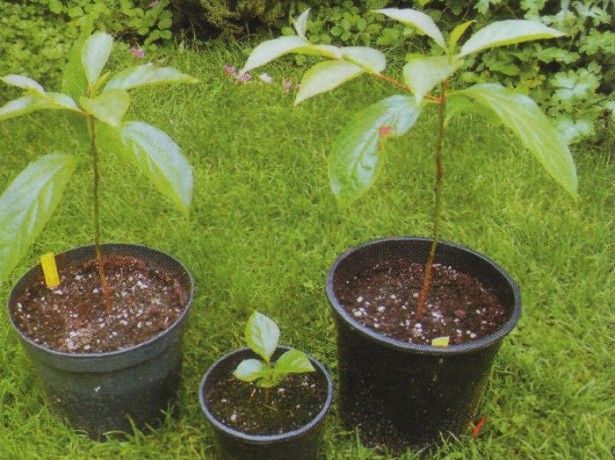
A transplant for persimmon is a must
In order for the root system to develop correctly, it is necessary to transplant the plant on time. It is important to gradually increase the capacity for the first 3 years. The optimal time is considered the beginning of spring or mid-winter. Upon reaching the age of 8, a transplant is required once a year. The new pot must be properly prepared. For this, a drainage layer is laid on the bottom.
When grown from a bone, it is better to perform the transplant procedure with an earthen lump. In this case, the seedling will quickly take root in a new place. After transplanting, the root system is sprinkled with fresh soil and watered abundantly. It is important to create conditions under which the tree will not experience stress. For the plant to start blooming, the root system must be cramped.
Sprouted persimmon care
After the first sprouts of the planted persimmon appear, caring for the plant will become completely easy. Here’s what you need to do.
- First of all, rearrange the pot with the plant from the darkness to the light, just keep in mind that direct sunlight should not fall on it.
- Check again to see if you have peeled off all the seedlings. If not, gently, using a knife or tweezers, repeat this procedure. Provided that the remnants of the seeds do not want to be removed easily, spray them with warm water and wrap them in a bag for a short time, this should definitely help.
- Water the sprouts as needed when the soil dries out, but do not overmoisten them, as there is a danger of decay.
- Feed the plant with a commercial nitrogenous garden product. Unfortunately, without this feeding of persimmon, you are unlikely to survive, even if you managed to grow strong sprouts.
- Persimmon shoots will be fast, and they will develop rapidly. So, if you already have several strong small plants, make sure to plant them in separate pots, preferably spacious ones, so that you do not have to transplant again later.
- After all the seedlings develop even more clearly, and their root system gets stronger, and permanent leaves appear, they will need to be transplanted into a container, which will become a permanent place of “residence” of the fruit tree. It will be enough to stock up with pots, the height of which is approximately 10-15 centimeters.
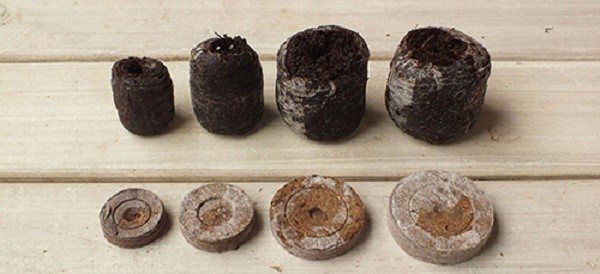
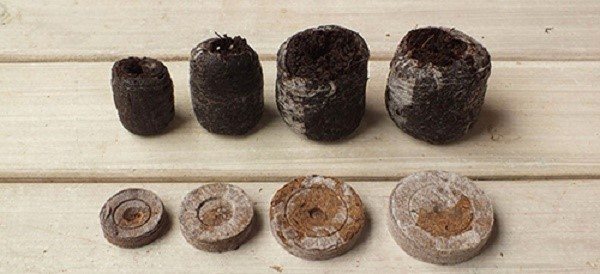
The pot of persimmon must be placed in the light, however, protected from direct sunlight in order to avoid burning out the leaves
Too large a container will lead to permanent soil oxidation, from which the roots of the plant will begin to rot from the roots. It is also important to purchase flower dishes made of high quality, non-toxic materials.
The healing properties of persimmons
It will now be easy for you to grow persimmons, knowing all the secrets of planting and caring for it, but do you know all its healing properties and how this wonderful fruit acts on your body?


Growing persimmons at home and its beneficial properties for the body
- One of the main substances contained in persimmons is magnesium. And, as you know, magnesium is indispensable for hypertensive diseases.
- Vitamin PP is excellent for treating depression, with a weakened immune system.
- Carotene strengthens the cardiovascular system, improves vision and skin condition. Carotene is also known as an antioxidant that prevents cancer.
- Potassium is indispensable for the diet of athletes and improves brain activity. Promotes the proper functioning of all human organs.
- Glucose and sugar strengthen the heart muscle, vitamin C – the walls of blood vessels.
- In addition to these vitamins, persimmon has a low acidity, which is useful for the gastrointestinal tract. And if you are struggling with varicose veins, bleeding gums, problems with digestion, gastrointestinal tract, liver – persimmon is an irreplaceable product for you.
- For a cold, dilute persimmon juice in warm water and gargle three times a day – the disease will recede.
- For diarrhea, take persimmon tea every four hours.
- Persimmons are also useful for pregnant women. By including a couple of fruits a day in your diet, you will increase immunity.
Persimmon has not only healing properties, but also quite effectively used in cosmetology, dietetics, has an anti-cellulite and anti-aging effect. And the healing properties of dried persimmon are no different from the properties of fresh ones.
Room persimmon care
During the cold weather, when the temperature in the apartment decreases due to insufficient active heating, there may be a danger of persimmon hypothermia. During this time, you can cover small trees with cans at night. Of course, when they grow up completely, it will no longer be necessary to do this.
From time to time, plants need to be sprayed with a spray bottle, and ventilated by exposing them to the balcony in the warm season. However, sometimes it is necessary to “stress” the plant, leaving it in conditions of light coolness for a short time. This will temper the persimmon and make it get used to the environmental conditions.
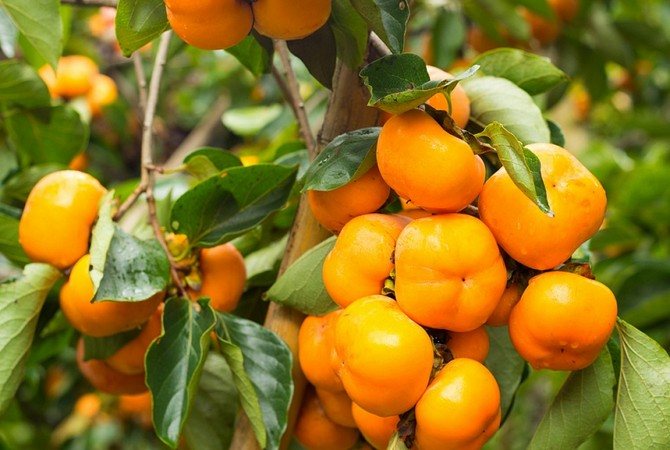
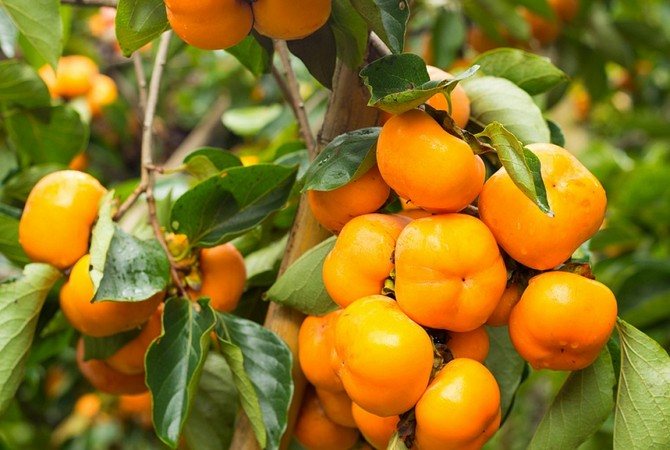
Persimmon is unpretentious in leaving, and it is a pleasure to pay attention to it
Preparing for planting
Do not take pits from fruits with moldy sepals. A fungus has already settled on them.
Persimmons are often frozen for flavor enhancement. The bones in them die even after a short stay at sub-zero temperatures and become unsuitable for sowing.
You cannot take a bone from an unripe fruit. Unripe persimmons need to ripen – just like they do with tomatoes:
- The fruit is placed in a warm, dry place, for example, on a windowsill next to a radiator.
- Wait until the peel is cracked and the sepals are completely dry.
Then the bones can be removed. They should be heavy, full-bodied, fully ripe. To separate the weak, immature material, the bones are thrown into ordinary tap water. Floated ones are unsuitable for sowing.
The soil for planting persimmons should not be nutritious. You can use a 1: 1 mixture of sand and peat.
Usually, a substrate is used to grow persimmons at home:
- meadow soil 1;
- peat 0,5;
- river sand 0,5.
Two weeks before planting, the substrate can be spilled with the Baikal preparation to saturate with beneficial microorganisms.
The seeds need to be removed in the cold for a while. Stratification lasts 1-2 months at a temperature of 5 degrees. All this time, the bones are kept on the shelf of the refrigerator, without wrapping them in polyethylene, as it must breathe.
To plant a persimmon on your own, you need to correctly choose a fruit with seeds suitable for planting. When selecting, take into account that the Sharon, Mandarinnaya varieties do not have seeds, therefore, it will not be possible to obtain planting material from them. The fruit, the seeds of which are suitable for planting, should be with sepals without signs of mold, well ripened. Frozen persimmon seeds, as a rule, also sprout.
If the berry brought home is hard, it is placed in a warm place for several days. When the pulp of the persimmon becomes very soft, cut it, remove the seeds, then prepare them for planting in the following sequence:
- Rinse with warm water, thoroughly removing pulp fibers.
- For 2 days, immersed in a light pink solution of potassium permanganate for disinfection. Pop-up instances are thrown away.
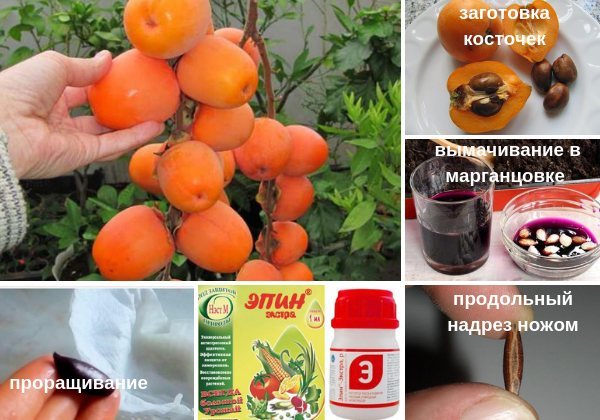

From seed to first harvest - Gently sand the edge of each seed with sandpaper so that they hatch faster.
- Prepare a solution of aloe juice (5 ml per 100 ml of water) or a growth stimulator (Immunocytophyte, Zircon, HB-101, Epin) according to the instructions.
- A cotton cloth or gauze is rolled several times and moistened abundantly in the resulting solution.
- The bones are placed between layers of cloth and placed in a cellophane bag.
- The bag is tied so that air remains in it, and placed to the radiator. After 7-10 days, the seeds should hatch.
You can germinate a persimmon seed in a simpler way by preparing a pot with a diameter of 10-12 cm and filling it with a mixture of garden soil, humus, peat and sand. See instructions in the picture.
Growing instructions
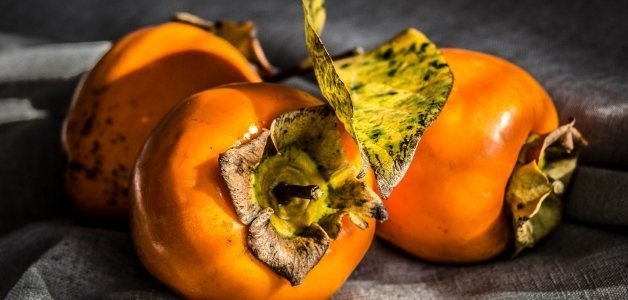

The seed soaked in potassium permanganate or Epin is buried 1,5 cm into the pre-watered soil, sprinkled with loose earth on top. The planting is covered with a plastic bag or glass, placed in a warm, bright place. A sprout should appear in 10-14 days.
At home, persimmons are grown for interior purposes, and not for harvesting. However, the tree is naturally fertile and capable of delighting with juicy orange berries even in an apartment. A five to six year old bush begins to bloom, and then there is a chance to feast on berries.
For growing at home in order to obtain fruits, it is better to take self-pollinated varieties. Suitable for apartment maintenance:
- Zenjiru;
- Hiakume;
- Khachia;
- Jiro.
To summarize
Considering all the nuances regarding the cultivation of a delicious fruit, beloved by all Russians, you can easily grow seedlings, which will gradually turn into a small, fruiting tree. After about 4 months, the seed will turn into a full-fledged plant, which will delight not only you, but also your family, friends and all guests. Having gained such valuable gardening experience, you can conduct similar experiments with other fruits, already knowing what nuances you need to attend to to create a comfortable atmosphere for a flower.
The most popular varieties of edible persimmon
Watch a video about the first fruiting of a persimmon grown from a stone.
Khachia. The fruits of this persimmon variety are large, they reach a weight of 300 grams. The second name of this species is “bull heart”. The color of the fruit is bright red. The shape is conical. The fruit contains 18% sugar. The fruit is delicious and sweet. But they become such only after they are fully ripe.
Tamopan. This variety has the largest fruits, weighing 550 grams. You can eat them only after they are fully ripe.
Jiro. Fruits are rounded with grooves. Fruits are very sweet as they contain a lot of sugar. Jiro persimmon can be consumed even in an unripe form.
A feature of growing persimmon from a stone is that only certain plant varieties are used for this purpose. There are more than 200 varieties of this fruit, which are subdivided into categories of yield, ripening time, and taste. At home, the culture can be grown from the following species:
- “Kinglet”;
- “Mider”;
- “Rossiyanka”;
- “Nikitskaya burgundy” and others.
Persimmon variety “Korolek” is a tall tree, similar in shape to an apple tree. Its fruits can be of different shapes: from spherical to heart-shaped. A common feature for all fruits is sweet, no tinge of viscosity, taste and dark color of the flesh. But this characteristic is characteristic only of ripe fruits.
Cultivation of the variety “Korolek”
In the same period, the variety “Mider” ripens. This species is characterized by the formation of medium-sized fruits, slightly flattened at the base. Fully ripe fruits have a sweet taste, completely devoid of astringency and accompanied by a delicate aroma. They easily come off the branch, but do not fall off. “Meader” refers to frost-resistant crops and easily tolerates low temperatures, down to -30 ° C.
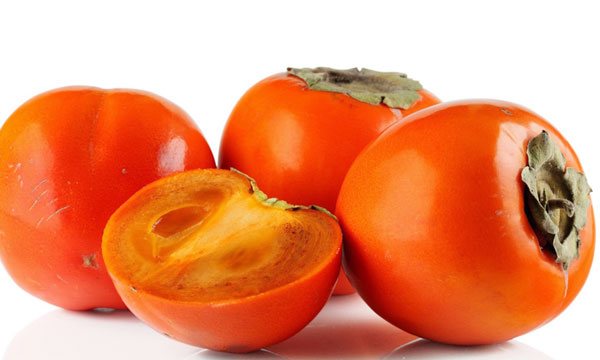

Derived from “Midera” is the persimmon variety “Rossiyanka”. Despite the small number of seeds, it is often used to grow new crops. Differs in small rounded yellow-orange fruits. “Rossiyanka” refers to constant crops, which in the solid state are accompanied by a tart aftertaste.
A popular variety used for growing persimmons from seeds at home is Nikitskaya Burgundy. This species is a tree of medium height, on the crown of which large fruits of a rich orange color are formed. Ripe fruits have a very sweet taste. The yield is annual and increases from year to year, which is why up to 7 kg of fruit can be obtained already in the 20th year of growth. The persimmon variety “Nikitskaya bordovaya” is distinguished by high frost resistance, due to which it successfully grows in the conditions of the Northern Black Sea region.
Persimmon grafting
The common persimmon is a monoecious plant, that is, there are male and female flowers on the same tree. But there are also dioecious species that have male and female specimens. It is not known which plant is formed from the seed: male or female. The male will not bear fruit.
Even if the tree is female, the quality of the fruit can be very poor. When propagated by seeds, persimmon gives great variability in the offspring. A tree with tasteless and even bitter fruits can grow from an ordinary bone. Therefore, the main method of reproduction of persimmons, from which it is planned to harvest, is grafting.
A persimmon seedling, which has developed from a seed sown with your own hands, can be used as a stock by grafting on it a cutting of an exotic variety brought from southern countries.
You can vaccinate:
- budding;
- copulation – with a handle.
Budding is carried out in spring, summer and autumn, during the growing season of the stock. An incision in the bark is made close to the surface of the soil and eyes are implanted from the middle part of the cutting. April budding gives especially good results. This month, the sap begins to move in the tree and the peephole quickly takes root.
Copulation is carried out in the following ways:
- cleft;
- for example;
- simple copulation;
- English copulation;
- vaccination with Geisfuss.
The cuttings are planted in winter and spring. The seedling itself can be used as a cutting, planting it on a dwarf stock to get a compact tree that grows freely in the room and does not take up much space.
Dwarf persimmon stock – Texas low-growing persimmon. The plant is native to Texas and New Mexico.
Experienced gardeners use the method of insertion, grafting onto a weakly growing stock the forms “Baby” and “Little Red Riding Hood”, which have the ability to reduce the growth of the part grafted above. Such a house tree is made up of three different plants or even four if a pollinator variety is grafted into the crown.
Where and how does persimmon grow?
In fact, there is no secret here. This large orange berry started growing in China. The oldest persimmon trees found there are about 500 years old. Then they began to actively grow it in Japan. And relatively recently (in the nineteenth century) it has become popular with us. Now persimmon trees grow in Europe, America, as well as in the Crimea and the Caucasus.
How does a persimmon tree grow in the garden?
Persimmon is a relatively small tree and very decorative in terms of its bright dark green or red (before falling off) leaves. The berries themselves are large and fleshy, with sweet pulp and an unforgettable aroma similar to the smell of apricot.
Trees bloom starting in May. Fruiting closer to November. That is why persimmon appears on our tables in winter, and in summer it is almost impossible to find it.
